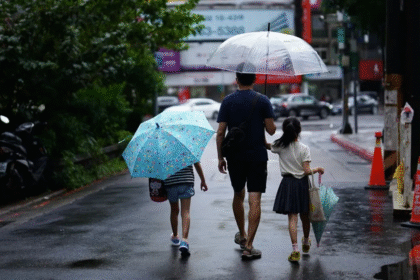Woman comes back to life after experiencing death for 8 minutes, reveals what she saw
A woman comes back to life after being clinically dead for 8 minutes—read her astonishing account of what she saw on the other side
A 33-year-old woman claims to have come back to life after being clinically dead for eight minutes. She described her near-death experience as peaceful despite the challenges of relearning basic functions post-revival.
A woman named Brianna Lafferty claims to have defied odds by coming to life after being pronounced clinically dead. After succumbing to a life-threatening neurological disorder, the 33-year-old woman bounced back after eight minutes of no pulse, no breath and no brain activity, Dail Mail reported.
Describing the time between life and death, she said, “Death is an illusion because our soul never dies. Our consciousness remains alive. And our very essence simply transforms.” Brianna Lafferty narrated her experience of return to the world of the living after death and said, “There is no pain, just a deep sense of peace and clarity.”
Narrating the ordeal, she said, “I did not see or remember my human self. I was completely still, yet I felt fully alive, aware, and more myself than ever before.” She further noted, “I was suddenly separated from my physical body.”
It is alleged that a rare neurological condition named ‘myoclonus dystonia’ was the primary cause of Brianna Lafferty’s near-death experience. This condition disrupts bodily functions and causes involuntary muscle jerks.
This disorder mainly affects neck, trunk and upper limbs and the symptoms can vary significantly from person to person. oral medications. Although there is no cure for myoclonus dystonia but available treatments can help minimise symptoms. Oral medications, therapies and botulinum neurotoxin injections support medical treatments, dystonia-foundation.org states. “A striking feature in some people with myoclonus dystonia is the alleviation of symptoms upon ingestion of alcohol,” the website notes.
Scientific research indicates that near-death experiences (NDEs) are neurological phenomena due to specific brain activity during moments of medical crisis. Once heart stop’s functioning, brain’s continued activity leads to altered states of consciousness and vivid perceptions, one of the theories suggest. According to Dail Mail’s report, Brianna Lafferty had to relearn how to walk and speak after her revival.
June 2025 – In an extraordinary account that blurs the line between life and death, a 36-year-old woman from Pune, India, who was clinically dead for eight full minutes, has come back to life—and her story is shaking both science and spirituality.
What she says she saw during those moments of flatline has left doctors intrigued and believers inspired.
It began as an ordinary day for Ritika Deshmukh, a software engineer and mother of two. She collapsed at her home after complaining of severe chest pain. Her husband, a medical representative, immediately performed CPR while calling an ambulance. She was rushed to Sahyadri Hospital, where doctors diagnosed her with sudden cardiac arrest.
According to Dr. Mehul Bansal, the cardiologist who led the emergency response, Ritika had no pulse, no heartbeat, and no brain activity for over 8 minutes. “Technically, she was gone,” Dr. Bansal said. “We followed standard resuscitation protocol, and against all odds, her heart started beating again.”
She was placed under observation in the ICU, but regained consciousness within 12 hours—with clear memory and shocking clarity about what she experienced during those lost minutes.”
When Ritika regained her ability to speak, the first thing she told her family and doctors left everyone speechless.
“I remember floating above the hospital bed,” Ritika said. “I could see my husband crying, doctors working frantically, and nurses moving around. But I felt no fear. I felt peace—total, all-encompassing peace.”
She described being pulled into what she called a “tunnel of light,” and encountering silhouettes of people she couldn’t identify, but who felt familiar. “There was no pain. No fear. Just calm. I felt like I was being told something important, though I can’t recall the words—only the feeling that everything would be okay.”
Ritika’s experience falls under what medical science refers to as a Near-Death Experience (NDE)—a phenomenon reported by thousands of people across the world who have been declared clinically dead but later revived.
“NDEs are not uncommon, especially in cardiac arrest cases,” said Dr. Arvind Rao, a neurologist not involved in the case. “The brain, when deprived of oxygen, can produce vivid experiences. These are often attributed to the release of endorphins, hallucinations, or dying brain activity. But there’s still much we don’t understand.”
However, for those like Ritika, the experience is not just neurochemical—it’s transformational. “I’ve always been a skeptic,” she said. “But after this, I can no longer deny that something exists beyond this life.”
Since the incident, Ritika has reportedly undergone a dramatic shift in her outlook on life. She has taken a break from her high-stress job, spends more time with her children, and has even begun exploring meditation and spiritual readings.
“I used to live in a rush, chasing deadlines and promotions. Now, I just want to live consciously. Every moment feels like a gift I wasn’t supposed to get.”
Her husband, too, says he has changed. “Seeing her go lifeless in front of me was the most terrifying thing I’ve ever experienced. I don’t care about anything else now—just having her back is a miracle.”
While scientists and doctors remain cautious, the case has sparked widespread public interest. Videos of Ritika sharing her story in Marathi and English have gone viral on social media, with hashtags like #BackFromTheDead, #8MinutesInHeaven, and #NearDeathExperience trending across platforms.
Religious leaders and spiritual thinkers have weighed in as well. “Experiences like these affirm the ancient belief that consciousness exists beyond the body,” said Swami Pranavananda of the Vedanta Foundation.
Whether seen as a miracle, a medical anomaly, or a message from beyond, Ritika Deshmukh’s story serves as a powerful reminder of life’s fragility—and the possibility that death might not be the end, but the beginning of something we’ve yet to fully comprehend.
As Ritika herself puts it, “I don’t fear death anymore. I just hope we all live well before it comes.”








